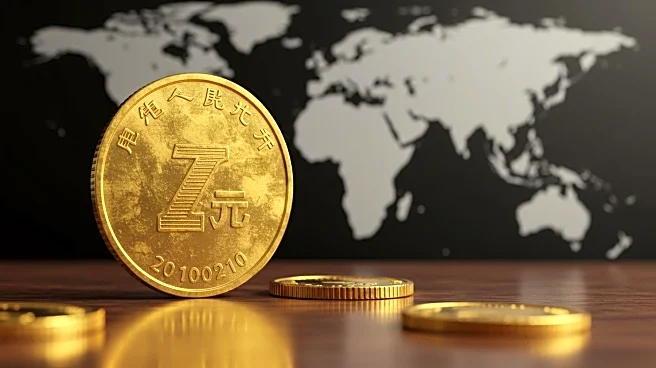What's Happening?
The Chinese yuan is gaining international prominence as geopolitical tensions, particularly tariff disputes between the U.S. and China, continue to unfold. In April 2025, President Trump imposed tariffs, leading to concerns that China might devalue its currency to offset export losses. The yuan initially depreciated but has since stabilized, closing between 7.15 and 7.25 per dollar. The People’s Bank of China has actively maintained this stability by setting the yuan’s daily reference rate stronger than the previous day’s closing price. Meanwhile, the U.S. dollar has weakened, with the Dollar Index dropping from 109 to below 100, marking a 10% decline. This shift has prompted investors to reassess risks and returns, contributing to 'de-dollarization' efforts.
Why It's Important?
The stabilization and growing appeal of the yuan have significant implications for global trade and finance. As the U.S. dollar weakens, the yuan's potential to become a more dominant global currency increases. This shift could alter international investment patterns, with more investors considering yuan-denominated assets. The tariff truce between the U.S. and China, extended by 90 days, has further stabilized trade relations, potentially easing economic pressures in China. The yuan's rising share in global foreign exchange reserves, forecasted to reach 5%, indicates its growing role in international finance, challenging the traditional dominance of the U.S. dollar.
What's Next?
The extension of the tariff truce suggests continued diplomatic efforts to stabilize U.S.-China trade relations. As market confidence in China rebounds, particularly with increased fiscal and monetary support, the yuan's internationalization is likely to accelerate. Experts recommend issuing more yuan-denominated financial products, such as offshore bonds, to cement its status as a global currency. This could lead to a significant shift in global financial markets, with the yuan playing a more central role.
Beyond the Headlines
The yuan's growing appeal amid geopolitical tensions highlights broader economic shifts, including the potential decline of the U.S. dollar's dominance. This could lead to long-term changes in global trade dynamics and financial systems, with countries diversifying their currency reserves. The strategic moves by China to stabilize its currency and attract foreign investment reflect a broader effort to enhance its economic influence globally.

















